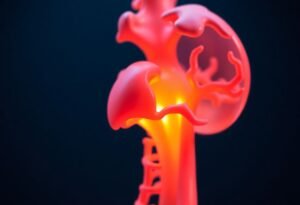3D printing has revolutionized the manufacturing landscape, empowering businesses to create products more efficiently and at a lower cost. This innovation not only reduces waste but also opens up new avenues for customization and rapid prototyping, driving competitiveness in various industries.
The Role of 3D Printing in Low-Cost Manufacturing
3D printing, also known as additive manufacturing, plays a crucial role in low-cost manufacturing. By enabling the production of complex geometries without the need for expensive tooling, businesses can significantly lower production costs. This technology allows for on-demand production, reducing the need for inventory and cutting down overhead costs. Innovative companies utilize 3D printers to manufacture prototypes, which streamlines the development process and speeds up time-to-market. Ultimately, this results in considerable savings and increases the ability for companies to remain competitive in a rapidly evolving market.
Enhancing Customization with 3D Printing
One of the key advantages of 3D printing is its ability to enhance customization in product manufacturing. Unlike traditional methods, which often require adjustments to mass production tooling, 3D printing allows for easy alterations to designs without incurring significant costs. This flexibility lets businesses cater to specific customer preferences, producing tailored solutions that enhance customer satisfaction. Particularly in industries such as healthcare, where custom medical devices can be produced at a fraction of the traditional costs, 3D printing represents a substantial innovation.
Reducing Material Waste in Production
In the quest for sustainability, reducing material waste has become critical. Traditional manufacturing processes often lead to substantial waste due to cuts and leftover materials. In contrast, 3D printing uses only the material necessary to create a product, minimizing waste significantly. This ability to build products layer by layer enhances resource efficiency and aligns with global sustainability goals. As businesses adopt 3D printing technologies, they not only reduce costs but also demonstrate their commitment to environmental responsibilities.
Accelerating Product Development Cycles
The rapid prototyping capabilities of 3D printing are transforming product development cycles across industries. Companies can quickly design, print, and test prototypes, accelerating the innovation process. Traditional methods often require lengthy lead times for tooling and setup, hindering the speed at which products can be brought to market. With 3D printing, teams can iterate on design concepts efficiently, facilitating a faster path from idea to final product. This innovation-focused approach meets the demand for quicker solutions in today’s fast-paced marketplace.
Supporting Local Manufacturing Initiatives
3D printing supports localized manufacturing, bringing production closer to consumers. This trend minimizes transportation costs and reduces the carbon footprint associated with long-distance shipping. Local manufacturing can enable communities to produce goods tailored to their specific needs and preferences. Furthermore, the accessibility of 3D printers makes it easier for startups and small businesses to enter the market, fostering economic development and community engagement in manufacturing.
Future Innovations in 3D Printing Technology
The future of 3D printing holds exciting possibilities for innovation and manufacturing advancements. Emerging materials and technologies are expected to broaden the applications of 3D printing beyond plastic and metal. Bioprinting, for instance, is paving the way for creating living tissues and organs, pushing the boundaries of what is possible in healthcare. As research and development in 3D printing continue, its impact on low-cost manufacturing will likely grow, creating new opportunities for innovation in various fields.
Disclaimer: The information provided in this article is for informational purposes only and does not constitute professional advice.





















